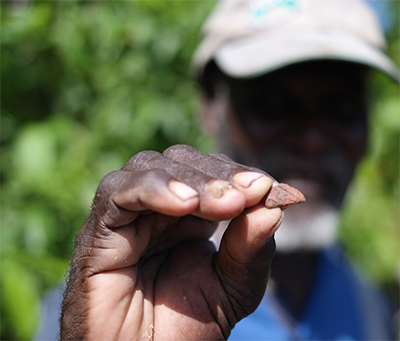Long Term Cultural-Ecological Change on Simbo, Solomon Islands: The Historical Ecology of Marine and Terrestrial Ecosystems
I am working with a collaborative team of archaeologists, geologists, ecologists, other scientists, and SDSU graduate students to help build and study a long sequence of dynamically coupled cultural and natural systems in Simbo, Solomon Islands. Our goal is to use Simbo as a model ecosystem to better understand the long-term relationship between people and their marine and terrestrial ecosystems, focusing on the land and seascape, demographic, and sociopolitical changes. The goal is to uncover the long-term human history of Simbo, when humans first arrived, the associated sociopolitical changes that occurred through time, and the effects of both human and natural climatic fluctuations on terrestrial and marine ecosystems.
Simbo offers a unique opportunity for understanding coupled human-environmental systems. Islands are generally systems simpler than continental ones, and yet they are dynamic systems that incorporate features of more complex continental systems. Simbo then can be a model system for understanding land, sea, and cultural transformation in a (somewhat) closed system. Simbo likely was first colonized tens of thousands of years ago by hunter-gatherer populations and saw the suite of socio-political changes that occurred worldwide – rising population densities, the introduction of domesticated plants and animals, the rise of sociopolitical complexity, contact with Europeans, and the increasing influences of globalization. Archaeological surveys, radiocarbon dating, zooarchaeological analysis, soil chemistry and material culture studies, and isotopic and ancient DNA studies can help trace these processes through time. Historical ecology and interdisciplinary research projects, such as ours, track the effects of evolving cultural and natural systems on island land and seascapes and the complex interplay between humans and their environments through time. Understanding both the modern cultural and natural systems of Simbo today, these long-term perspectives are critical.

A pottery fragment found on Simbo that is from approximately 200–450 AD. See: Haas, H., Braje, T. J., Lauer, M., Fitzpatrick, S. M., Kiko, L., & Ale'eke, G. (2018). Archaeological reconnaissance and the first radiocarbon dates From Simbo Island, Western Province, Solomon Islands. Journal of Pacific Archaeology, 9(1), 63-69.